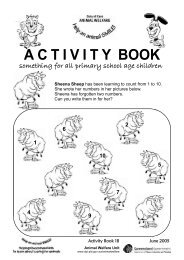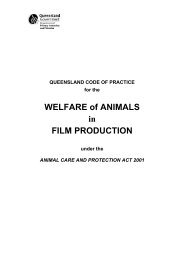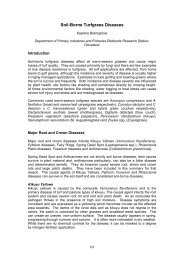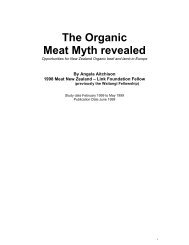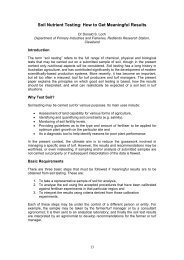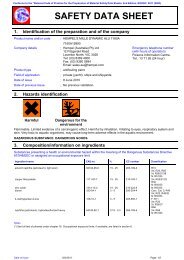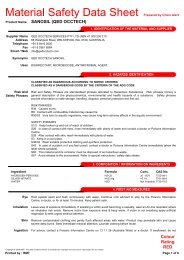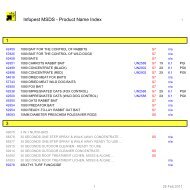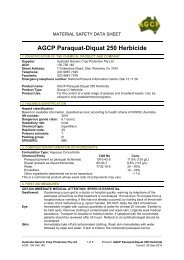Guidelines For Rural Beekeeping In Queensland
Guidelines For Rural Beekeeping In Queensland
Guidelines For Rural Beekeeping In Queensland
You also want an ePaper? Increase the reach of your titles
YUMPU automatically turns print PDFs into web optimized ePapers that Google loves.
Transporting hives<br />
Methods of shifting<br />
Ideally hives should be shifted by one of the following methods.<br />
Open entrance transport<br />
• This is the most common way of shifting hives.<br />
• Hives are loaded at dusk or at night and the bees allowed to settle.<br />
• Travel is undertaken at night and destination is reached before daylight.<br />
• Bees are unloaded after arrival, preferably at daybreak.<br />
Closed entrance transport<br />
• This method allows an owner to shift bees a short distance and unload without being stung.<br />
• Hives must be fitted with adequate ventilation so bees do not suffocate.<br />
• Beehives can be shifted in a utility or a conventional station wagon vehicle.<br />
• Beehives can be closed at night. After the bees cluster at the entrance they are smoked and driven<br />
inside the hive.<br />
• Hives should be shifted at night when all bees are at home and when temperatures are coolest.<br />
Netted bee transport<br />
• The use of nets allows beekeepers to move hives during the day and at night.<br />
• Bees need to be loaded at night or dusk.<br />
• Nets must be secure enough to contain bees in transit and not flap in the breeze. A strong<br />
commercially available fine mesh is suitable.<br />
• Bees can be shifted during daylight hours provided temperatures are not too high.<br />
• Trucks should not be parked near bright lights, e.g. at service stations. This will lessen the<br />
likelihood of bees becoming excited or escaping and causing a public nuisance.<br />
Accidents<br />
An accident involving a load of live bees is the worst nightmare for beekeepers, motorists and emergency<br />
services personnel. The incident becomes more critical as daylight appears after a night accident.<br />
The beekeeper, if unhurt, needs to provide advice and assistance. The beekeeper should also provide<br />
contact details of other beekeepers who may be able to help.<br />
If possible the DPI&F Apiary Section should also be alerted, as information in the registration<br />
database may be useful in contacting other beekeepers. DPI&F officers may also be able to assist.<br />
If beehives are damaged in the accident the preferred method of killing hives is to spray the bees with<br />
detergent water. This will kill most bees that threaten to sting the people at the scene of the accident.<br />
Water is also essential to clean up spilt honey.<br />
Fire and Police Services would generally be called to help at such an event.<br />
25



